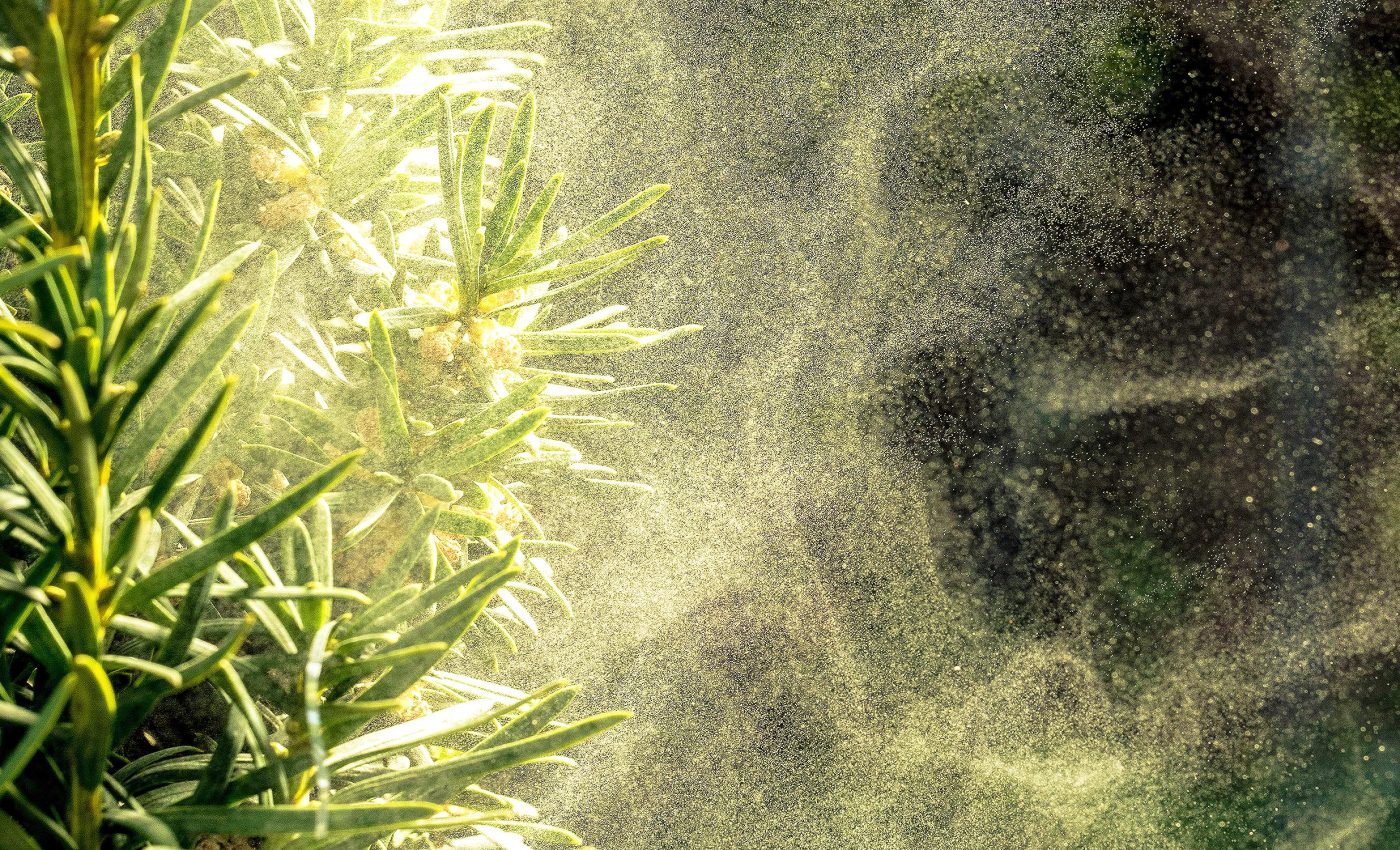
Pollen alters cloud formation and changes weather patterns
Spring is a time for blossoms and hay we often associate pollen with allergic reactions — a cause of sniffles and sneezes. But who would’ve guessed that tiny pollen spores wield such power over clouds and the overall weather?
It turns out pollen plays a vital role in facilitating the freezing of water in clouds, inciting more precipitation and cloud ice.
Pollen: More than meets the eye
Dr. Jan Kretzschmar, meteorologist and lead author of the study from Leipzig University, alongside co-author Professor Johannes Quaas, Professor of Theoretical Meteorology at Leipzig, decided to take a closer look at how pollen impacts the weather.
Apparently, pollen enhances ice formation in clouds, even at temperatures between minus 15 and minus 25 degrees Celsius (5°F to -13°F).
Without these ice-nucleating particles (INPs), water in clouds only freezes at temperatures below minus 38 degrees Celsius (-36°F).
“This is supported by laboratory results showing that pollen acts as an ice nucleus, influencing the freezing temperature of water in clouds and promoting precipitation,” says Dr. Kretzschmar.
Pollen, clouds and weather patterns
Globally, pollen’s effect on ice formation might not seem substantial compared to other substances like dust. However, on a regional and seasonal level, pollen’s power becomes evident.
We usually experience the pollen onslaught in the spring. Not only do these particles trigger our allergies, but they also rise into the atmosphere, entering cold air layers and stimulating ice formation.
Our tiny hero, pollen, doesn’t stay up there for long. Its size restricts it to a short atmospheric tenure. But here’s the plot twist: when pollen comes in contact with humid conditions, it ruptures into smaller fragments.
These minute particles stick around longer in the air and in large quantities, can penetrate cold atmospheric layers, triggering ice formation.
Pollen’s influence on clouds
Understanding how pollen impacts weather requires delving into its unique properties and interaction with atmospheric conditions.
Pollen grains possess a rough surface and can absorb moisture, making them remarkably effective as ice-nucleating particles, particularly in certain environmental conditions.
This quality is essential in the phase transition of water from liquid to solid, as the presence of such particles lowers the energy barrier for freezing.
Through this process, pollen effectively accelerates the formation of ice crystals within clouds, an initiation crucial for precipitation development.
Consequently, pollen’s interaction with existing cloud constituents helps propagate more extensive precipitation patterns, making it a pivotal factor in local meteorology during peak pollen periods.
Implications for climate models
The revelation that pollen contributes significantly to cloud microphysics presents challenges and opportunities for atmospheric science.
Current climate models predominantly factor in major ice-nucleating agents like dust or soot, often overlooking the transient yet potent influence of pollen.
Integrating pollen dynamics into these models can enhance predictive accuracy, especially in regions with prolific plant life.
Future research is expected to focus on quantifying pollen’s variability in different ecosystems, investigating its contribution to cloud dynamics, and exploring how changes in vegetation and climate might alter its role.
By refining our understanding of pollen’s multifaceted impact on the atmosphere, scientists can develop more comprehensive climate models that better capture the intricate interplay between terrestrial biosystems and atmospheric processes.
Pollen’s role in a changing weather
Now, let’s take a dip into the pool of climate change. With the onset of the pollen season shifting, extending, and the volumes of pollen in the air increasing, we might be looking at heightened local precipitation.
Biodiversity is another piece of the puzzle. In spring, numerous plant species let loose volumes of pollen simultaneously. This natural event impacts cloud formation and the amount of ice particles in the atmosphere.
How vast is this impact? That’s what scientists are keen to figure out. Understanding pollen’s role could help generate more accurate climate models.
If we can correctly simulate the effect of pollen and how it interacts with the climate, we will be able to make more accurate predictions.
Pollen, an important factor in cloud formation
So, can we consider pollen as an unsuspecting player in our planet’s weather system? Perhaps. The upcoming research results are eagerly awaited.
You might have started reading this article thinking pollen was just a trivial plant byproduct. But now, doesn’t it feel like there is more to the story?
Remember, every time you sneeze this spring season, there’s more going on than just a minor allergy. You might just be witnessing a phenomenon that could change our understanding of the weather.
—–
This research was carried out by researchers from Leipzig University, the Leibniz Institute for Tropospheric Research (TROPOS), the German Centre for Integrative Biodiversity Research (iDiv) Halle-Jena-Leipzig and the Max Planck Institute for Biogeochemistry. It’s astounding what everyday things can teach us.
The study is published in the journal Environmental Research Letters.
—–
Like what you read? Subscribe to our newsletter for engaging articles, exclusive content, and the latest updates.
Check us out on EarthSnap, a free app brought to you by Eric Ralls and Earth.com.
—–













